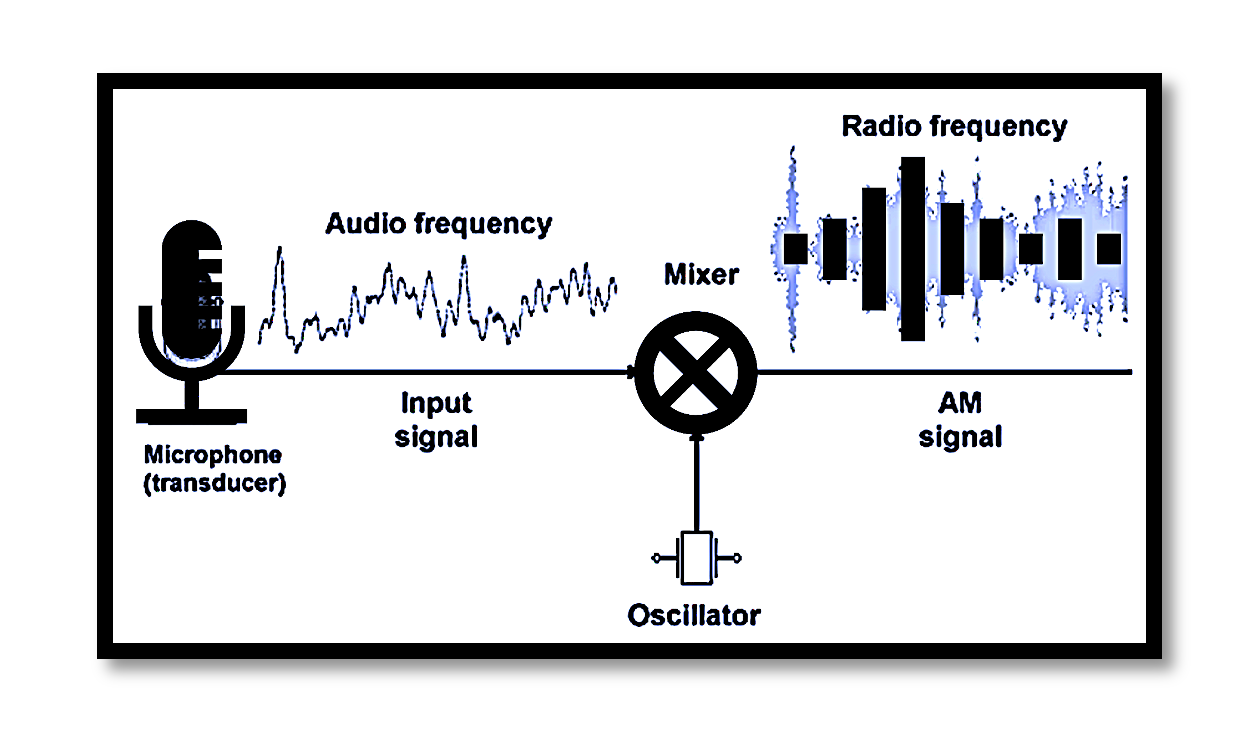
Understanding Amplitude Modulation (AM)
Amplitude Modulation (AM) is a widely utilized technique for modulating a carrier wave to transmit information over radio frequencies. This method varies the amplitude of the carrier signal in accordance with the information signal, which can represent audio, video, or data. This blog will offer a comprehensive overview of AM, covering its principles, modulation aspects, advantages, disadvantages, and applications.

This modulation technique is effective in broadcasting and has served as a fundamental method in radio communication.
Modulation Aspects
Waveform Characteristics
The AM process involves combining a carrier signal with the information signal. The resulting waveform is a complex structure where the amplitude of the carrier wave varies according to the amplitude of the information signal. This relationship is key to understanding how AM effectively transmits information. Further analysis reveals that the AM signal can be expressed in terms of its frequency components. The Fourier transform representation shows that the spectrum of the AM signal contains components at the carrier frequency fc and sidebands at fc±fm, where fm is the frequency of the message signal. This emphasizes the ability of AM to convey information through modulation of the carrier wave’s frequency.

Frequency Domain Representation
In the frequency domain, the analysis of AM signals reveals how the modulated signal can be understood in terms of its spectral components. The Fourier transform indicates that the modulated signal contains frequencies corresponding to both the carrier and the modulating signal. This frequency representation is crucial for understanding the bandwidth requirements and potential interference patterns associated with AM signals.
Demodulation Process
Demodulation is the process of extracting the original information from the modulated carrier signal. This process typically involves rectification followed by filtering. A diode detector is commonly used to rectify the AM wave, after which a low-pass filter removes high-frequency components, resulting in the recovery of the original baseband message signal.
Pros and Cons of Amplitude Modulation
AM has several advantages and disadvantages:
Advantages:
- Simplicity: The receiver circuitry for AM is relatively simple and cost-effective.
- Low Bandwidth: AM occupies a smaller portion of the frequency spectrum, making it suitable for long-range transmissions.
Disadvantages:
- Interference: AM signals are more susceptible to noise and interference, which can degrade sound quality.
- Signal Distortion: AM is prone to distortion and degradation, particularly in the presence of interference, reducing its reliability for critical applications.
Applications of Amplitude Modulation
AM is widely used in various broadcasting applications. It is predominantly employed for long, medium, and short-wave band broadcasting. One notable application is in airband radio, where AM plays a crucial role in aviation communication. The VHF transmissions utilized in the aerospace industry heavily rely on AM, facilitating effective communication between airborne equipment and ground stations.
Take our entry level course (Below) for free using coupon code RAHRF101BLOG
RF Fundamentals, Basic Concepts and Components – RAHRF101
For limited time take an additional 10% off of all our courses using coupon code RFCERT10
Rahsoft RF Certificate and courses
Conclusion
In summary, Amplitude Modulation is a foundational technique in telecommunications characterized by its simplicity and effectiveness in broadcasting. While it has drawbacks such as susceptibility to interference and signal degradation, its continued use in various applications, particularly in radio broadcasting and aviation, underscores its importance in modern communication systems. Understanding the principles, modulation characteristics, and practical applications of AM is essential for anyone interested in the field of signal processing and telecommunications.

Learn more about this topic by taking the complete course ‘Introduction to Modulation in Communication Systems Online Course – RAHRF152’. Watch the course videos for more detailed understanding. Also checkout other courses on RF system and IC design on https://rahsoft.com/courses/. Rahsoft also provides a certificate on Radio Frequency. All the courses offer step by step approach.



